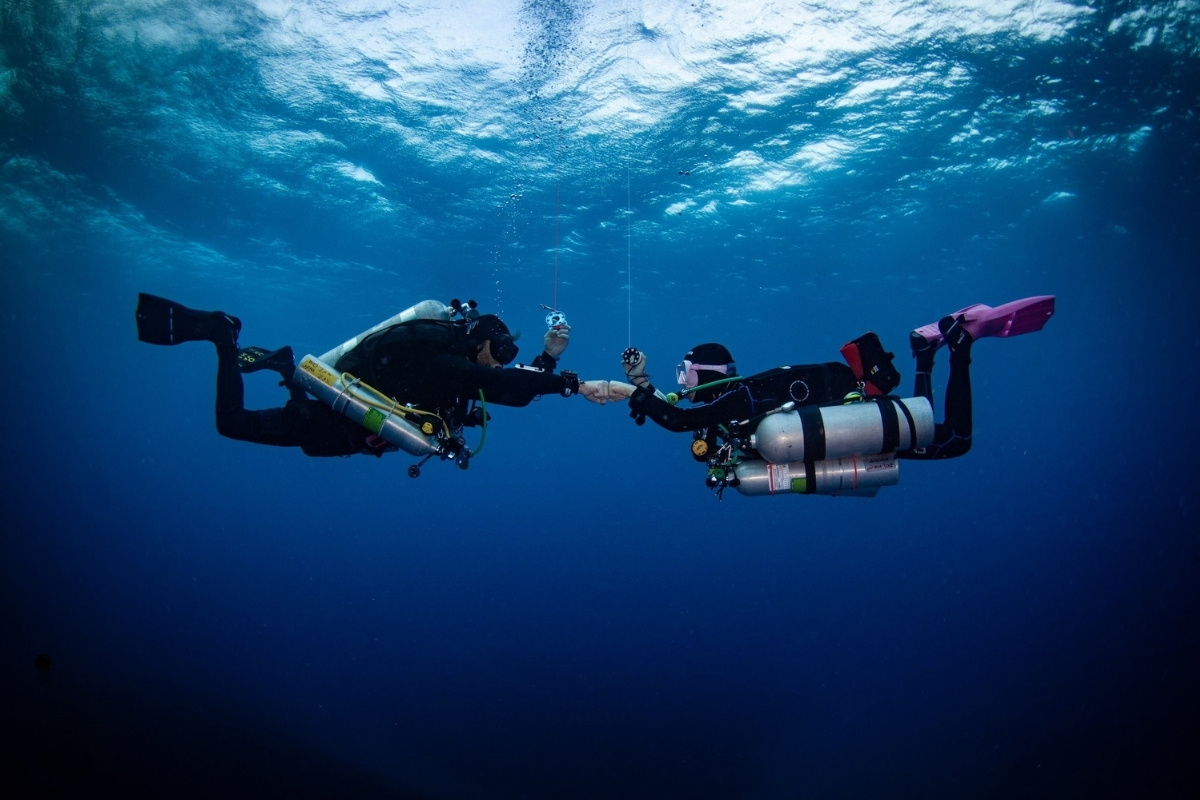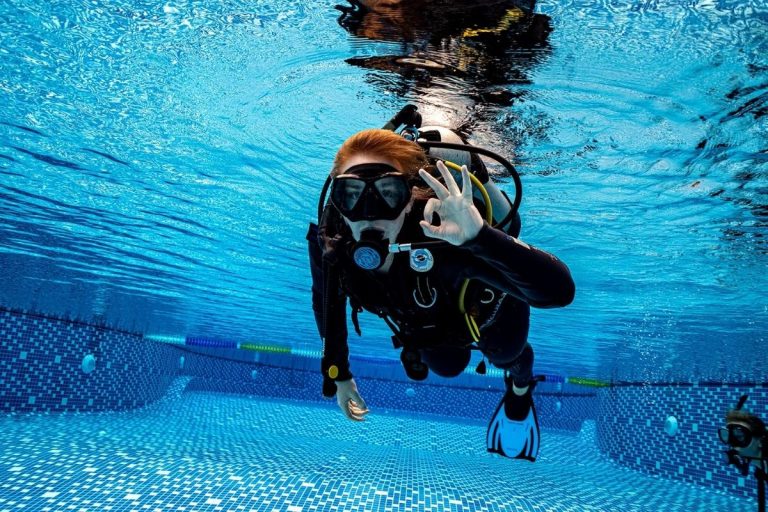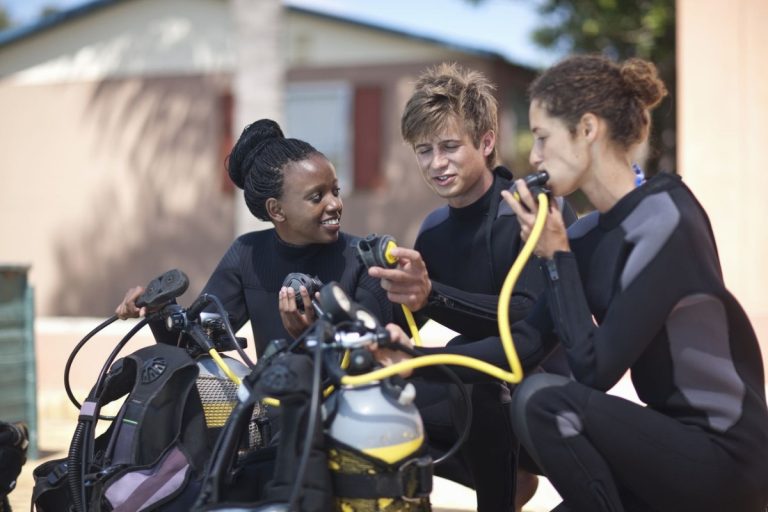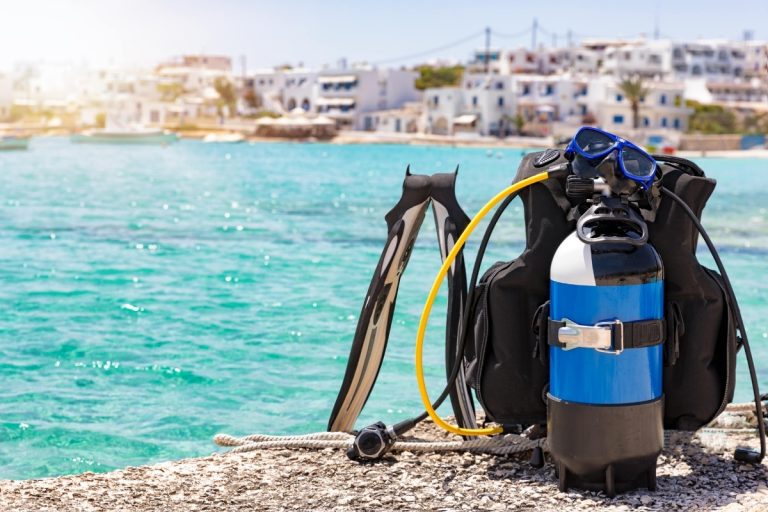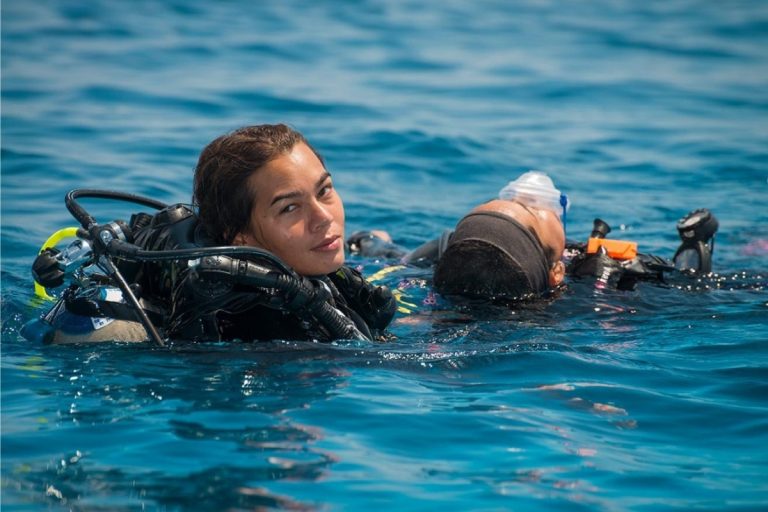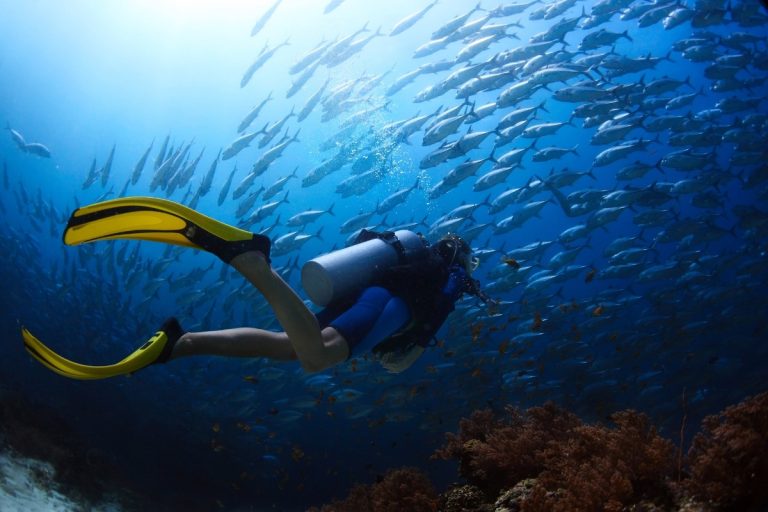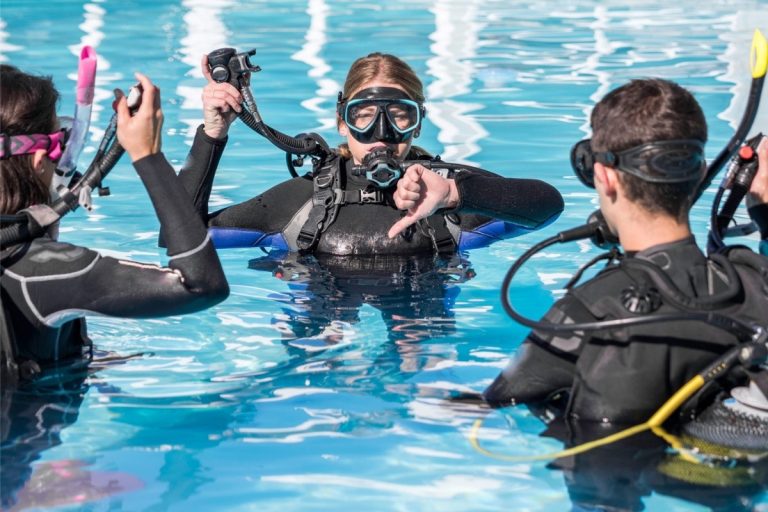- Introduction to Specialty Courses
- Enriched Air (Nitrox) Course Overview
- Photography Specialty Course
- Technical Diving (Tec Diving)
- Course Prerequisites and Medical Requirements
- PADI Club Membership Benefits
- Diving Trips and Experiences
- Continuing Education Opportunities
- Frequently Asked Questions
- Exploring the Depths of Specialty Diving
Introduction to Specialty Courses
Scuba diving opens up a world of underwater possibilities, but the real adventure begins when you start exploring specialty courses. These specialized training programs allow divers to develop specific skills, gain confidence in unique environments, and pursue their particular underwater interests. Whether you’re fascinated by longer bottom times, capturing stunning underwater images, or pushing the boundaries of recreational diving, specialty courses provide the knowledge and certification you need.
Specialty courses serve as stepping stones in your diving journey, each one building upon your foundational skills while introducing new techniques and equipment. They’re designed to make you a more versatile, confident, and safe diver. Many divers find that these courses reignite their passion for the underwater world by opening doors to experiences they never thought possible.
The beauty of specialty training lies in its flexibility. You can choose courses that align with your interests, diving goals, and local diving conditions. Some divers prefer to focus on extending their dive times, while others are drawn to the artistic side of underwater photography or the technical challenges of deeper diving.
Enriched Air (Nitrox) Course Overview
The Enriched Air Nitrox course stands as one of the most popular and practical specialty courses available to certified divers. This training introduces you to breathing gas mixtures with higher oxygen content than regular air, typically containing 32% or 36% oxygen instead of the standard 21%. The result is significantly longer bottom times and shorter surface intervals between dives.
What makes this course particularly appealing is its immediate practical benefits. Divers who complete their enriched air training often find they can spend 50% more time exploring their favorite dive sites. This extended bottom time allows for more relaxed diving, better opportunities to observe marine life, and the ability to complete more thorough underwater photography sessions.
The course covers gas theory, dive planning with enriched air, and the proper use of oxygen analyzers. You’ll learn how different oxygen percentages affect your dive profiles and how to calculate maximum operating depths for various nitrox mixtures. Modern scuba equipment is generally compatible with enriched air mixtures up to 40% oxygen, making the transition seamless for most divers.
Safety remains paramount throughout the training. Instructors emphasize the importance of proper gas analysis, understanding oxygen toxicity limits, and maintaining accurate dive logs. The course also covers equipment considerations and the special requirements for oxygen-clean tanks and regulators when using higher oxygen concentrations.
Benefits of Enriched Air Diving
Extended bottom times represent the most immediate and noticeable benefit of enriched air diving. With less nitrogen in your breathing gas, you absorb nitrogen more slowly, allowing you to stay underwater longer before reaching no-decompression limits. This extended time proves invaluable for underwater photographers, marine biology enthusiasts, and divers who simply want to maximize their underwater experiences.
Shorter surface intervals between dives create more flexibility in your diving schedule. While recreational divers using regular air might need to wait several hours between dives, enriched air divers often can return to the water much sooner. This benefit becomes particularly valuable during dive trips where you want to maximize your underwater time.
Many divers report feeling less fatigued after diving with enriched air. While scientific evidence for this benefit remains limited, the reduced nitrogen loading may contribute to feeling more refreshed after diving. This perceived benefit, combined with the extended bottom times, makes enriched air diving an attractive option for multi-dive days.
Eligibility Requirements
The enriched air certification welcomes divers as young as 12 years old, making it accessible to junior divers who want to extend their underwater adventures. The primary requirement is holding a valid Open Water Diver certification or equivalent from a recognized training agency. This prerequisite ensures that students have mastered basic diving skills before adding the complexity of gas management.
No minimum number of logged dives is required, though having some diving experience beyond the initial certification helps students better appreciate the benefits of enriched air. Many dive centers recommend completing at least 10-15 dives before enrolling, as this experience provides a better foundation for understanding dive planning and gas consumption patterns.
Medical fitness for diving remains essential, following the same standards as other scuba certifications. Students should be comfortable with basic dive planning concepts and have a solid understanding of dive tables or dive computer use, as enriched air diving requires more detailed planning than standard air diving.
Course Structure and Costs
The enriched air course typically costs around $210 and includes comprehensive eLearning materials, practical training sessions, and certification upon successful completion. This investment provides excellent value considering the immediate benefits and enhanced diving experiences that follow certification.
Course structure combines online theoretical learning with hands-on practical sessions. The eLearning component covers gas theory, dive planning, and safety procedures, allowing students to progress at their own pace. Most students complete the online portion in 4-6 hours, though the material remains accessible for review throughout their diving career.
Practical sessions focus on oxygen analysis procedures, dive planning exercises, and equipment familiarization. Students learn to use oxygen analyzers accurately, plan dives using enriched air tables or computers, and understand the special considerations for enriched air diving. These sessions typically require 2-3 hours at the dive center.
Online Learning and Practical Sessions
The eLearning platform provides interactive modules that make complex gas theory concepts accessible to divers of all backgrounds. Students can pause, review, and revisit material as needed, ensuring thorough understanding before moving to practical applications. The online format allows flexible scheduling around work and other commitments.
Interactive quizzes and knowledge reviews throughout the eLearning program help reinforce key concepts. Students receive immediate feedback on their progress, identifying areas that may need additional study. The program tracks completion status, making it easy for instructors to monitor student progress.
Practical sessions bring the theoretical knowledge to life through hands-on experience with oxygen analyzers and dive planning tools. Students practice analyzing gas mixtures, recording results, and planning actual dives using enriched air. These sessions build confidence and ensure students can safely apply their new knowledge in real diving situations.
Advanced Certification Credits
Completing the enriched air course counts toward advanced certifications, including Advanced Open Water Diver and Master Scuba Diver ratings. This credit system encourages continuing education while recognizing the valuable skills gained through specialty training. Many divers find that specialty courses provide a more focused and practical path toward advanced certifications.
The course also serves as a foundation for technical diving training. Divers interested in eventually pursuing technical certifications benefit from the gas theory and dive planning skills developed in the enriched air course. Understanding oxygen percentages and gas management becomes crucial in more advanced diving disciplines.
Credit toward advanced certifications makes the enriched air course an excellent investment in your diving education. Rather than simply collecting certifications, you gain practical skills that immediately enhance your diving while building toward more advanced training opportunities.
Photography Specialty Course
Underwater photography combines the thrill of diving with the artistic challenge of capturing the ocean’s beauty. The photography specialty course transforms casual snapshots into compelling images that tell the story of your underwater adventures. This training covers everything from basic camera operation underwater to advanced composition techniques that separate amateur photos from professional-quality images.
The course addresses the unique challenges of underwater photography, including light absorption, color loss, and the magnification effects of water. Students learn to work with these physical limitations rather than fighting against them, discovering techniques that produce stunning results even in challenging conditions.
Modern underwater photography has been revolutionized by digital technology, making high-quality images more accessible than ever. The course covers both traditional techniques and cutting-edge digital workflows, ensuring students can adapt to rapidly evolving technology while maintaining strong foundational skills.
Introduction to Underwater Photography
Underwater photography presents unique challenges that don’t exist in terrestrial photography. Water absorbs light rapidly, with red wavelengths disappearing first, followed by orange and yellow. This absorption creates the characteristic blue-green cast of underwater images and requires specific techniques to restore natural colors.
Understanding how water affects light helps photographers make better decisions about positioning, artificial lighting, and post-processing. The course explains why getting close to subjects produces better results and how water clarity affects image quality. These concepts form the foundation for all successful underwater photography.
Camera stability becomes crucial underwater, where even small movements can blur images. Students learn proper buoyancy control techniques specific to photography, including how to position themselves for optimal shots while maintaining safe diving practices. Breathing techniques and body positioning receive special attention as they directly impact image sharpness.
Essential Equipment for Underwater Photography
Camera housing selection represents one of the most important equipment decisions for underwater photographers. The course covers different housing types, from basic waterproof cases for compact cameras to professional aluminum housings for DSLRs. Students learn to evaluate housing features, including control accessibility, port options, and depth ratings.
Lighting equipment transforms underwater photography from documentary snapshots to artistic images. Strobes and continuous lights each offer advantages in different situations. The course explains strobe positioning, power settings, and how to balance artificial light with available natural light for professional-looking results.
Lens selection significantly impacts the types of images possible underwater. Wide-angle lenses capture expansive reef scenes and large marine life, while macro lenses reveal the intricate details of small creatures. Students learn to match lens choice with photographic goals and diving conditions.
Techniques for Capturing Stunning Shots
Composition underwater follows many traditional photography rules while requiring adaptations for the aquatic environment. The rule of thirds applies underwater, but photographers must also consider the three-dimensional nature of the underwater world. Students learn to use depth and layering to create compelling compositions.
Working with marine life requires patience, respect, and understanding of animal behavior. The course teaches ethical photography practices that minimize impact on marine ecosystems while maximizing opportunities for compelling images. Students learn to anticipate animal movements and position themselves for optimal shots.
Lighting techniques separate amateur underwater photos from professional results. Students practice balancing strobe light with ambient light, creating pleasing backgrounds, and avoiding common lighting mistakes like backscatter and harsh shadows. These skills require practice but dramatically improve image quality.
Post-Processing Tips and Tricks
Digital post-processing allows photographers to overcome many limitations of underwater imaging. Color correction techniques restore natural colors lost to water absorption, while contrast adjustments help images appear more vibrant and engaging. The course covers essential editing techniques using popular software programs.
Noise reduction becomes important for underwater images, particularly those shot in low-light conditions. Students learn to balance noise reduction with detail preservation, maintaining image quality while creating clean, professional results. These techniques prove especially valuable for images shot at depth or in murky water.
File management and workflow organization help photographers handle the large number of images typically generated during diving trips. Students learn efficient methods for sorting, rating, and processing images, making the post-dive editing process more manageable and enjoyable.
Showcasing Your Work
Sharing underwater photographs effectively requires understanding different platforms and their requirements. Social media platforms have specific image requirements and audience expectations. The course covers optimization techniques for various platforms while maintaining image quality and artistic integrity.
Print preparation requires different considerations than digital display. Students learn about color spaces, resolution requirements, and paper selection for underwater images. Understanding these technical aspects ensures that printed images accurately represent the photographer’s artistic vision.
Building a portfolio of underwater images requires careful curation and presentation. Students learn to select their strongest images and present them effectively, whether for personal satisfaction, competition entry, or professional purposes. Portfolio development becomes an ongoing process that evolves with improving skills.
Technical Diving (Tec Diving)
Technical diving pushes beyond the boundaries of recreational scuba diving, opening access to deeper wrecks, longer cave penetrations, and extended bottom times. This advanced form of diving requires specialized training, equipment, and mindset, but rewards practitioners with access to underwater environments that few people ever experience.
The transition from recreational to technical diving represents a significant step in a diver’s education. Technical diving demands higher levels of skill, fitness, and mental preparation. Divers must be comfortable with complex equipment configurations, detailed dive planning, and emergency procedures that go far beyond recreational diving requirements.
Technical diving encompasses various specialties, including deep air diving, mixed gas diving, cave diving, and wreck penetration. Each specialty requires specific training and equipment, but all share common elements of detailed planning, redundant safety systems, and advanced gas management techniques.
What is Technical Diving?
Technical diving extends beyond recreational diving limits through the use of specialized equipment, breathing gases, and procedures. While recreational diving typically limits depths to 130 feet and prohibits overhead environments, technical diving safely extends these boundaries through careful planning and advanced techniques.
Decompression diving forms a core component of technical diving, allowing divers to exceed no-decompression limits by making planned decompression stops during ascent. This technique requires understanding decompression theory, gas management, and emergency procedures specific to decompression diving.
Mixed gas diving uses breathing gases other than air to extend bottom times, reduce narcosis, or manage decompression requirements. Trimix, containing helium, oxygen, and nitrogen, allows diving to extreme depths with reduced narcosis. Nitrox provides longer bottom times and faster decompression at moderate depths.
Differences Between Recreational and Technical Diving
Equipment redundancy distinguishes technical diving from recreational diving. Technical divers carry backup systems for critical life support equipment, including multiple regulators, depth gauges, and timing devices. This redundancy ensures that single equipment failures don’t create life-threatening emergencies.
Gas management becomes more complex in technical diving, often involving multiple breathing gases for different phases of the dive. Divers must plan gas supplies for normal consumption, emergency situations, and assistance to other divers. This planning requires detailed calculations and conservative safety margins.
Training standards for technical diving exceed recreational requirements in both duration and complexity. Technical courses require more classroom time, pool sessions, and open water training dives. Students must demonstrate mastery of advanced skills before progressing to more challenging environments.
Equipment Needed for Tec Diving
Technical diving equipment configurations prioritize redundancy and functionality over simplicity. Twin tanks or rebreathers provide primary breathing gas, while stage bottles carry decompression gases or emergency supplies. This equipment requires specialized training to operate safely and efficiently.
Buoyancy control devices for technical diving often feature larger lift capacities and multiple inflation sources. Wing-style BCDs provide better trim control when carrying multiple tanks and equipment. Some technical divers prefer dry suits for thermal protection during long decompression stops.
Navigation and communication equipment becomes crucial for technical diving, particularly in overhead environments. Underwater lights, reels, and cutting tools are standard equipment for cave and wreck diving. Dive computers designed for technical diving can handle multiple gas mixes and complex decompression profiles.
Safety Considerations in Tec Diving
Risk management in technical diving requires systematic approaches to identifying and mitigating potential hazards. Divers must analyze each dive for specific risks and develop appropriate response plans. This analysis includes equipment failures, environmental hazards, and physiological concerns.
Emergency procedures for technical diving are more complex than recreational diving responses. Divers must be prepared for equipment failures, gas supply problems, and medical emergencies in environments where immediate surface access isn’t possible. Regular practice of emergency procedures maintains critical skills.
Team diving protocols ensure that technical divers can assist each other during emergencies. These protocols cover gas sharing procedures, emergency ascent techniques, and communication methods. Team members must be equally trained and equipped to provide effective assistance.
Training and Certification for Tec Diving
Technical diving training follows progressive levels, starting with basic technical skills and advancing to complex mixed gas and rebreather diving. Entry-level courses like Advanced Nitrox and Decompression Procedures provide foundations for more advanced training.
Prerequisites for technical diving training typically include advanced recreational certifications, minimum dive experience, and demonstrated proficiency in fundamental diving skills. Many technical training agencies require rescue diver certification and significant logged dive experience before accepting students.
Continuing education becomes essential in technical diving due to evolving techniques, equipment, and safety protocols. Technical divers must stay current with training requirements and participate in regular skill maintenance programs to maintain their certifications and diving safety.
Course Prerequisites and Medical Requirements
Understanding course prerequisites and medical requirements helps divers plan their training progression and ensure they meet all necessary qualifications before enrolling in specialty courses. These requirements exist to maintain safety standards and ensure students have the foundational skills needed for success in advanced training.
Medical fitness for diving becomes increasingly important as divers progress to more challenging specialties. Some courses have specific medical requirements beyond standard recreational diving fitness, particularly those involving overhead environments or extended exposure times.
Age requirements vary among different specialty courses, with some programs available to junior divers while others require adult certification. Understanding these requirements helps families plan diving education for younger divers and ensures appropriate course selection.
General Prerequisites for Specialty Courses
Most specialty courses require a current Open Water Diver certification or equivalent from a recognized training agency. This prerequisite ensures students have mastered basic diving skills including buoyancy control, underwater navigation, and emergency procedures before adding specialty-specific complexities.
Minimum dive experience requirements vary among courses, with some accepting newly certified divers while others require significant logged dive experience. These requirements reflect the complexity and risk level associated with each specialty, ensuring students have adequate foundational experience.
Course prerequisites and medical requirements ensure that divers are properly prepared for the challenges and responsibilities of advanced training. Meeting these requirements demonstrates commitment to safe diving practices and continuing education.
Medical Clearances and Considerations
Standard diving medical examinations cover cardiovascular fitness, respiratory function, and neurological health. Some specialty courses may require additional medical evaluations, particularly those involving overhead environments, deep diving, or extended exposure times.
Certain medical conditions may preclude participation in specific specialty courses even if they don’t affect recreational diving. For example, courses involving rapid depth changes or extended bottom times may have stricter cardiovascular requirements than basic recreational diving.
Regular medical evaluations become more important as divers age or develop health conditions. Many training agencies recommend annual medical examinations for divers over certain ages or those with specific medical histories.
Age Requirements for Various Courses
Junior diver programs allow young people to participate in many specialty courses with appropriate supervision and modified depth limits. These programs maintain safety while encouraging young divers to develop advanced skills and pursue their diving interests.
Adult supervision requirements for junior divers vary among courses and training agencies. Some courses require direct instructor supervision throughout training and certification dives, while others allow certified adult divers to provide supervision after initial training.
Age-appropriate course modifications ensure that younger divers can safely participate in specialty training while recognizing their developmental limitations. These modifications may include reduced depth limits, shorter dive times, or additional safety requirements.
PADI Club Membership Benefits
PADI Club membership provides significant value for active divers through discounts on continuing education, access to exclusive resources, and support for ocean conservation initiatives. The membership program recognizes that diving education is an ongoing journey and provides tools and incentives to support lifelong learning.
The 20% discount on select eLearning programs makes continuing education more affordable for active divers. This discount applies to many popular specialty courses and can result in substantial savings for divers pursuing multiple certifications or advanced training programs.
Conservation initiatives supported through PADI Club membership connect divers with meaningful environmental protection efforts. Members contribute to programs focused on marine debris removal, shark and ray protection, and coral reef conservation, making their membership investment support causes they care about.
Overview of PADI Club Membership
PADI Club membership costs vary by region but typically provide excellent value for active divers. The membership includes magazine subscriptions, digital resources, and exclusive access to member-only content and events. These benefits extend beyond simple discounts to create a comprehensive diving lifestyle support system.
Membership benefits extend to dive travel through partnerships with dive operators and liveaboard companies worldwide. Members often receive preferred booking status, exclusive trip opportunities, and discounts on diving vacations. These travel benefits can quickly offset membership costs for divers who travel regularly.
Digital resources available to members include advanced dive planning tools, species identification guides, and continuing education materials. These resources support ongoing learning and help members get more from their diving experiences.
Discounts on Courses and eLearning
The 20% discount on eLearning programs applies to most specialty courses, making advanced training more accessible to budget-conscious divers. This discount can save hundreds of dollars for divers pursuing multiple certifications or advanced ratings like Master Scuba Diver.
Course discounts extend beyond eLearning to include practical training components at participating dive centers. Many PADI dive centers offer additional member discounts on equipment, dive trips, and certification courses, multiplying the value of membership.
Refresher course access helps certified divers maintain their skills and confidence, particularly after extended periods away from diving. These courses provide valuable skill review and updates on current techniques and safety procedures.
Access to Refresher Courses and Resources
Free refresher courses available to members help maintain diving skills and update knowledge of current techniques and safety procedures. These courses prove particularly valuable for divers returning to the sport after extended breaks or those wanting to brush up on specific skills.
Digital resources include updated training materials, safety bulletins, and technique videos that help members stay current with evolving diving practices. These resources supplement formal training and provide ongoing education opportunities.
Member-exclusive webinars and online events provide access to expert instruction and specialized topics not available through standard training programs. These events often feature renowned diving professionals and cover cutting-edge techniques and destinations.
Conservation Initiatives Supported by PADI
PADI AWARE Foundation programs supported through membership fees focus on critical ocean conservation issues including marine debris, shark protection, and coral reef preservation. Members contribute directly to these programs through their membership investment.
Project AWARE initiatives include organized cleanup events, citizen science programs, and advocacy efforts that give divers meaningful ways to protect the underwater environments they love. Members receive priority access to these programs and exclusive updates on conservation progress.
Shark and ray protection programs work to establish marine protected areas and promote sustainable fishing practices. Members support these efforts while gaining access to exclusive educational materials and research updates on these critical species.
Community Engagement through PADI Club
Local dive community connections help members find diving partners, participate in group activities, and stay engaged with their local diving scene. PADI Club facilitates these connections through online platforms and organized events.
Member recognition programs celebrate achievements in continuing education, conservation participation, and community involvement. These programs provide motivation for ongoing participation and recognize members who exemplify PADI’s values and mission.
Exclusive member events include dive trips, training workshops, and social gatherings that bring the diving community together. These events provide networking opportunities and help members connect with other passionate divers.
Diving Trips and Experiences
Diving trips provide opportunities to apply newly learned specialty skills in exciting destinations around the world. With over 250 dive vessels and 18,000 trips available through online booking platforms, divers have unprecedented access to diverse underwater experiences that complement their specialty training.
Popular destinations for specialty courses combine excellent diving conditions with professional instruction and support services. These locations often feature specific attractions that highlight the benefits of specialty training, such as deep wrecks for enriched air divers or vibrant reefs for underwater photographers.
Group versus individual booking options provide flexibility for different travel preferences and budgets. Group trips often include specialized instruction and guided experiences, while individual bookings allow for customized itineraries and personal exploration.
Overview of Available Dive Trips
Worldwide dive trip options span every major diving destination, from tropical coral reefs to temperate kelp forests and arctic ice diving. This diversity ensures that divers can find trips that match their interests, skill levels, and specialty certifications.
Liveaboard diving trips provide intensive diving experiences with multiple dives per day in remote locations. These trips are particularly valuable for specialty divers who want to maximize their underwater time and practice new skills in diverse conditions.
Day trip options work well for divers with limited time or those wanting to sample new destinations before committing to longer trips. Many specialty courses can be completed during extended day trip programs, combining training with recreational diving.
Booking Options for Dives and Courses
Online booking platforms streamline the process of finding and reserving dive trips and training programs. These systems allow divers to compare options, read reviews, and make secure reservations from anywhere in the world.
Flexible payment options including deposits and payment plans make expensive dive trips more accessible to budget-conscious divers. Many operators offer early booking discounts and group rates that provide additional savings opportunities.
Cancellation and rescheduling policies vary among operators but generally provide reasonable protection for divers whose plans change due to weather, health, or other circumstances. Understanding these policies helps divers make informed booking decisions.
Popular Destinations for Specialty Courses
Tropical destinations like the Caribbean and Indo-Pacific offer excellent conditions for underwater photography training with clear water, abundant marine life, and professional support services. These locations provide ideal learning environments for developing new skills.
Temperate water destinations offer unique opportunities for specialty training including kelp forest diving, cold water techniques, and specialized equipment use. These locations often feature excellent visibility and diverse marine ecosystems.
Technical diving destinations include deep wrecks, cave systems, and challenging environments that require advanced training and equipment. These locations attract experienced divers seeking to push their limits and explore unique underwater environments.
Group vs. Individual Bookings
Group bookings often include specialized instruction, guided diving, and social activities that enhance the overall experience. These trips work well for divers who enjoy meeting new people and participating in organized activities.
Individual bookings provide maximum flexibility for experienced divers who prefer to plan their own activities and dive schedules. These options work well for divers with specific goals or those traveling with their own dive partners.
Mixed booking options allow divers to combine group activities with individual exploration, providing the best of both approaches. Many dive operators offer flexible programs that accommodate different preferences within the same trip.
Continuing Education Opportunities
Continuing education represents the heart of diving development, providing pathways from basic certification through professional levels. Advanced Open Water Diver courses build upon foundational skills while introducing new environments and techniques that expand diving capabilities and confidence.
Rescue Diver and Divemaster pathways prepare divers for leadership roles within the diving community. These programs develop advanced problem-solving skills, emergency response capabilities, and the knowledge needed to guide and assist other divers safely.
The importance of continuing education in diving extends beyond skill development to include safety awareness, environmental stewardship, and personal growth. Regular training helps divers stay current with evolving techniques and safety standards while maintaining the skills needed for safe diving.
Advanced Open Water Diver Course
The Advanced Open Water Diver course provides structured introduction to specialty diving areas through required and elective adventure dives. Deep diving and underwater navigation form the required components, while elective dives allow students to explore their specific interests.
Course structure emphasizes practical experience over classroom theory, with most learning occurring during actual diving activities. This hands-on approach helps students develop confidence while exploring new diving environments and techniques.
Adventure dive credits from the Advanced Open Water course can be applied toward full specialty certifications, providing a cost-effective way to sample different diving specialties before committing to complete training programs.
Rescue Diver and Divemaster Pathways
Rescue Diver training develops critical thinking and problem-solving skills that benefit all diving activities. Students learn to recognize and respond to diving emergencies while developing the confidence and competence needed to assist other divers.
Divemaster training prepares divers for professional roles within the diving industry. This comprehensive program covers dive theory, practical skills, and leadership techniques needed to guide certified divers and assist with training programs.
Continuing education for divers pursuing professional development includes regular skill updates, specialty instructor training, and business development programs that support career advancement in the diving industry.
Importance of Continuing Education in Diving
Skill maintenance requires regular practice and formal refresher training to ensure competency and safety. Continuing education programs provide structured opportunities to review and update critical diving skills while learning new techniques and safety procedures.
Safety awareness evolves with new research, equipment developments, and incident analysis. Regular training helps divers stay current with best practices and safety recommendations that reduce risks and improve diving experiences.
Personal growth through
Frequently Asked Questions
What is the Enriched Air (Nitrox) course?
The Enriched Air (Nitrox) course teaches divers how to use breathing gas mixtures with higher oxygen content, allowing for longer bottom times and shorter surface intervals.
What are the benefits of the Photography specialty course?
The Photography specialty course improves underwater photography skills, teaching techniques to capture stunning images and manage unique underwater challenges.
What distinguishes Technical Diving from recreational diving?
Technical Diving involves advanced skills, specialized equipment, and the use of multiple breathing gases, allowing divers to explore deeper and more complex environments.
What are the prerequisites for these specialty courses?
Most specialty courses require a valid Open Water Diver certification and some prior dive experience, with age requirements varying by course.
What are the benefits of PADI Club membership?
PADI Club membership offers discounts on courses, access to exclusive resources, and support for ocean conservation initiatives.
Exploring the Depths of Specialty Diving
Engaging in advanced specialty courses opens new horizons for divers, fostering skills that enhance both safety and enjoyment in underwater exploration. Whether aiming for extended dive times, capturing mesmerizing images, or embarking on technical adventures, these courses provide essential training for divers looking to deepen their connection with the underwater world.
